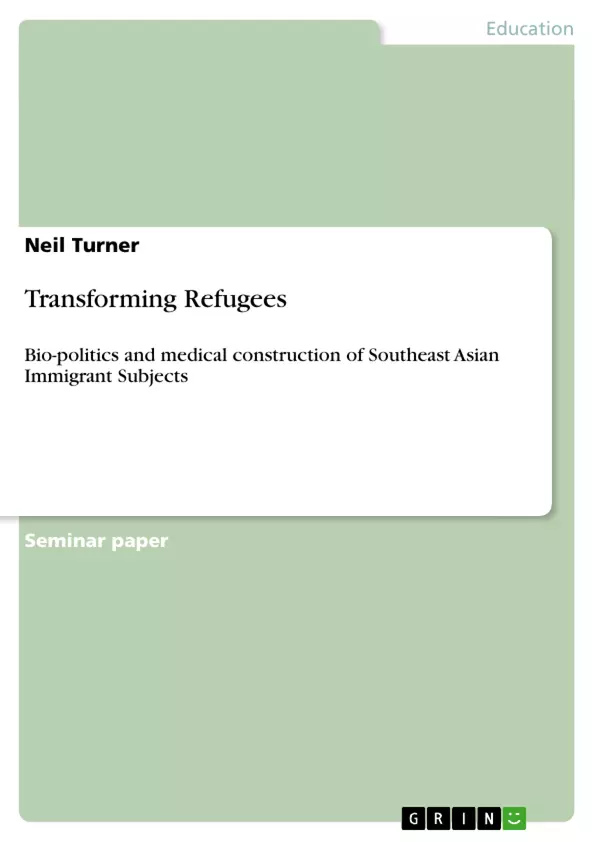The point of this essay is not to argue that biomedicine has become a mechanism for establishing political or cultural identity for refugees entering the U.S. Neither does it claim that modern biomedicine influences define the character and needs of immigrants. Rather, it seeks to establish that each verifies the other and it seeks to present biomedicine as a mediator of physical realities that gives nation-states justification for domination and control of immigrants and refugees. We will first trace the emergence of the “gaze” in a historical context to its formation as a classificatory concept and mechanism of power relations. Then, we will discuss the central role of cultural citizenship and its impact on the processes of immigration and assimilation.
Inhaltsverzeichnis (Table of Contents)
- Introduction
- Normalizing Subjects
- Screening Processes
- Cultural Invisibility
- Transformed Realities
Zielsetzung und Themenschwerpunkte (Objectives and Key Themes)
This essay aims to examine the role of biomedicine in shaping the cultural and political identities of Southeast Asian refugees entering the U.S. It argues that biomedicine acts as a mediator of physical realities, providing justification for state control and domination of immigrants.- The historical development of the "biomedical gaze" and its role in establishing power relations.
- The concept of cultural citizenship and its impact on immigration and assimilation processes.
- The use of "screening processes" to normalize and control refugee populations.
- The challenges and difficulties faced by refugees in navigating cultural and political barriers upon entering the U.S.
- The impact of the "biomedical gaze" on the construction of Southeast Asian immigrant subjects.
Zusammenfassung der Kapitel (Chapter Summaries)
- Introduction: The essay establishes its focus on the intersection of biopolitics and medical practices in shaping the lives of Southeast Asian refugees. It introduces the concept of "bio-power" and its influence on defining and controlling human life.
- Normalizing Subjects: This section delves into the historical origins of the "normative gaze" and its role in shaping European colonial discourse. It explores the scientific underpinnings of racial classifications and how they informed the notion of "normality" in relation to non-European populations.
- Screening Processes: Through a personal anecdote, this section examines the practical application of "screening processes" at a U.S. airport. It highlights the discriminatory practices and challenges faced by Southeast Asian refugees in gaining entry to the U.S. The section links these processes to broader socio-political mechanisms of control and normalization.
Schlüsselwörter (Keywords)
This essay explores the intersection of biopolitics, medical practices, cultural citizenship, and the experiences of Southeast Asian refugees in the U.S. Key concepts include the "biomedical gaze," "screening processes," cultural invisibility, and the transformation of identity. The essay examines how these factors shape the lives and experiences of Southeast Asian immigrants in the context of American society.- Arbeit zitieren
- Dr. Neil Turner (Autor:in), 2005, Transforming Refugees, München, GRIN Verlag, https://www.grin.com/document/131422



